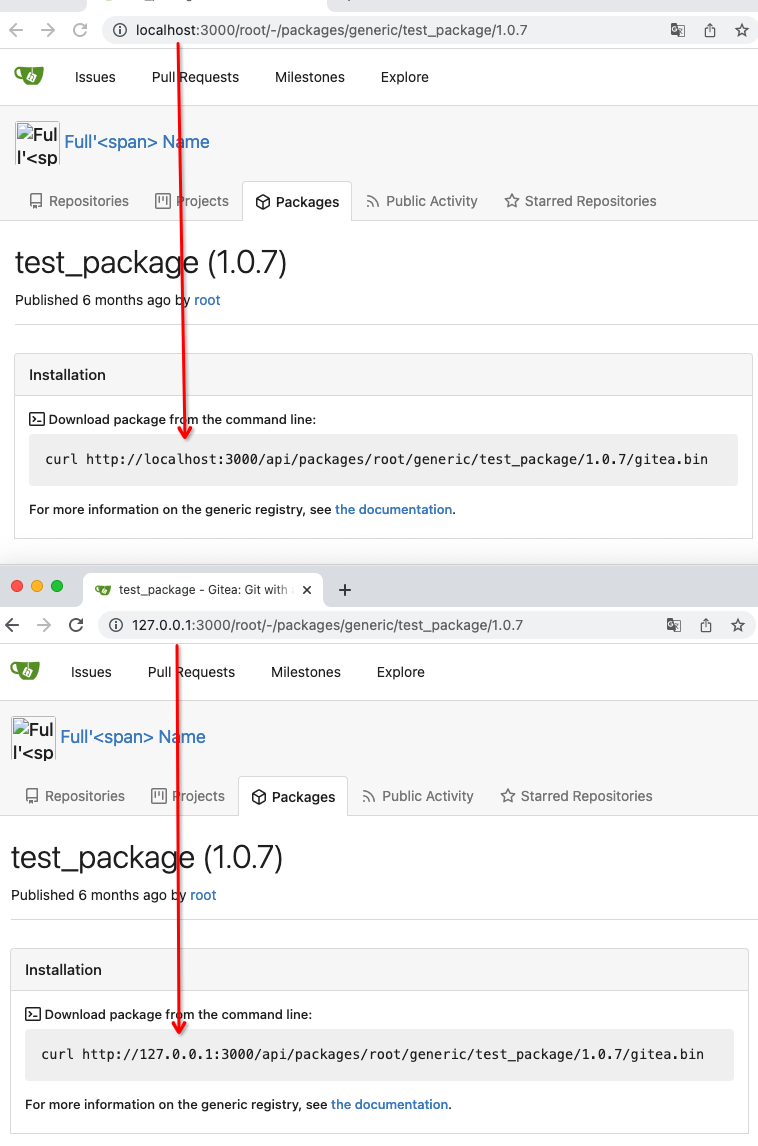IF YOU WOULD LIKE TO GET AN ACCOUNT, please write an
email to Administrator. User accounts are meant only to access repo
and report issues and/or generate pull requests.
This is a purpose-specific Git hosting for
BaseALT
projects. Thank you for your understanding!
Только зарегистрированные пользователи имеют доступ к сервису!
Для получения аккаунта, обратитесь к администратору.
Fixes https://github.com/go-gitea/gitea/issues/30721 and overhauls the
stopwatch. Time is now shown inside the "dot" icon and on both mobile
and desktop. All rendering is now done by `<relative-time>`, the
`pretty-ms` dependency is dropped.
Desktop:
<img width="557" alt="Screenshot 2024-04-29 at 22 33 27"
src="https://github.com/go-gitea/gitea/assets/115237/3a46cdbf-6af2-4bf9-b07f-021348badaac">
Mobile:
<img width="640" alt="Screenshot 2024-04-29 at 22 34 19"
src="https://github.com/go-gitea/gitea/assets/115237/8a2beea7-bd5d-473f-8fff-66f63fd50877">
Note for tippy:
Previously, tippy instances defaulted to "menu" theme, but that theme is
really only meant for `.ui.menu`, so it was not optimal for the
stopwatch popover.
This introduces a unopinionated `default` theme that has no padding and
should be suitable for all content. I reviewed all existing uses and
explicitely set the desired `theme` on all of them.
There is a small layout shift in when active tab changes. Notice how the
actions SVG is unstable:

This is because the active item with bold text is wider then the
inactive one. I have applied [this
trick](https://stackoverflow.com/a/32570813/808699) to prevent this
layout shift. It's only active inside `<overflow-menu>` because I wanted
to avoid changing HTML and doing it in regular JS would cause a flicker.
I don't expect us to introduce other similar menus without
`<overflow-menu>`, so that place is likely fine.

I also changed the weight from 500 to 600, slightly reduced horizontal
padding, merged some tab-bar related CSS rules and a added a small
margin below repo-header so it does not look so crammed against the
buttons on top.
---------
Co-authored-by: wxiaoguang <wxiaoguang@gmail.com>
When setting `url.host` on a URL object with no port specified (like is
the case of default port), the resulting URL's port will not change.
Workaround this quirk in the URL standard by explicitely setting port
for the http and https protocols.
Extracted the logic to a function for the purpose of testing. Initially
I wanted to have the function in utils.js, but it turns out esbuild can
not treeshake the unused functions which would result in the
webcomponents chunk having all 2kB utils.js inlined, so it seemed not
worth.
Fixes: https://github.com/go-gitea/gitea/issues/29084
Related: #23590
Reference:
https://github.com/webcomponents/polyfills/tree/master/packages/webcomponentsjs
It seems that there are some users using old browsers, so the
`window.customElements` need polyfill.
The Custom Elements would help a lot for Gitea's UI problems, including:
* `<span class="js-pretty-number">`
* `<time data-format>`
So it's worth get polyfill.
---------
Co-authored-by: delvh <dev.lh@web.de>
This PR follows:
* #21986
* #22831
This PR also introduce customized HTML elements, which would also help
problems like:
* #17760
* #21429
* #21440
With customized HTML elements, there won't be any load-search-replace
operations, and it can avoid page flicking (which @silverwind cares a
lot).
Browser support:
https://developer.mozilla.org/en-US/docs/Web/API/Window/customElements
# FAQ
## Why the component has the prefix?
As usual, I would strongly suggest to add prefixes for our own/private
names. The dedicated prefix will avoid conflicts in the future, and it
makes it easier to introduce various 3rd components, like GitHub's
`relative-time` component. If there is no prefix, it's impossible to
introduce another public component with the same name in the future.
## Why the `custcomp.js` is loaded before HTML body? The `index.js` is
after HTML body.
Customized components must be registered before the content loading.
Otherwise there would be still some flicking.
`custcomp.js` should have its own dependencies and should be very light,
so it won't affect the page loading time too much.
## Why use `data-url` attribute but not use the `textContent`?
According to the standard, the `connectedCallback` occurs on the
tag-opening moment. The element's children are not ready yet.
## Why not use `{{.GuessCurrentOrigin $.ctx ...}}` to let backend decide
the absolute URL?
It's difficult for backend to guess the correct protocol(scheme)
correctly with zero configuration. Generating the absolute URL from
frontend can guarantee that the URL is 100% correct -- since the user is
visiting it.
# Screenshot
<details>

</details>